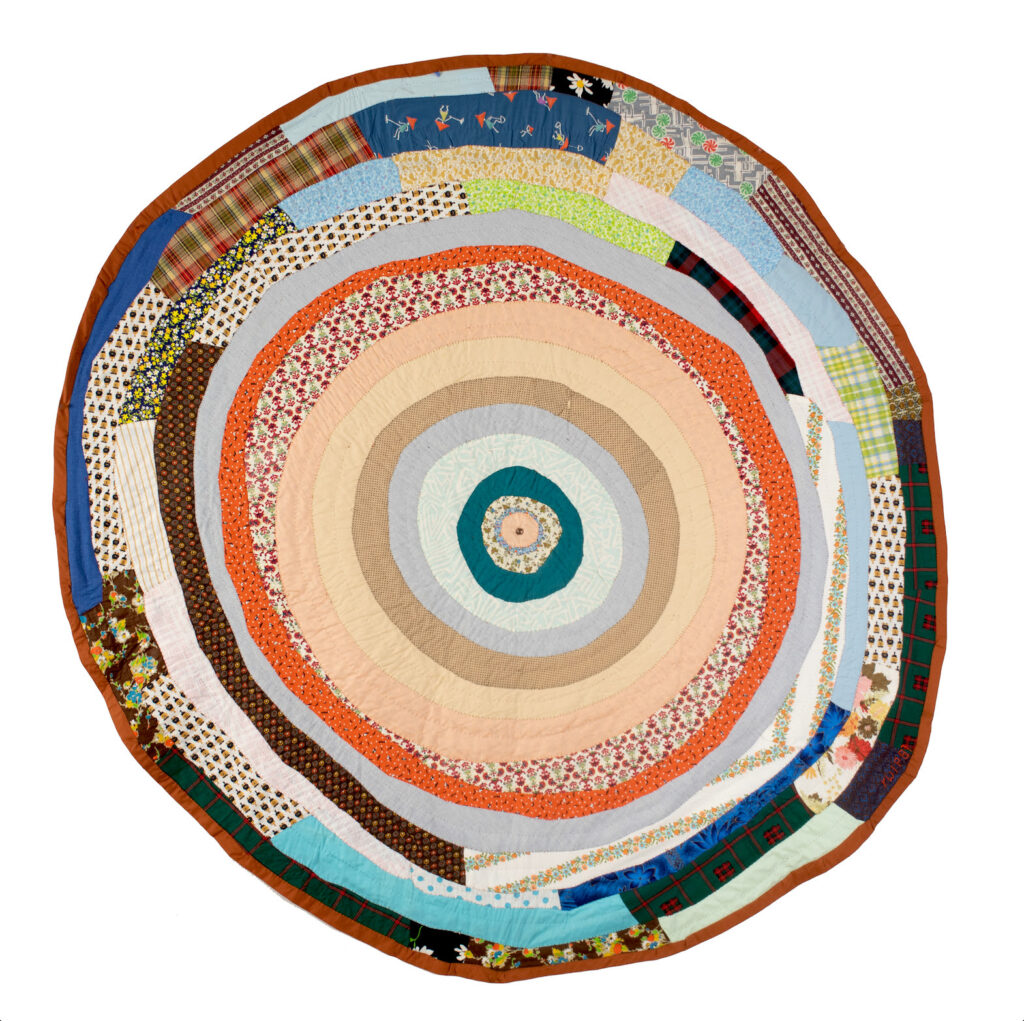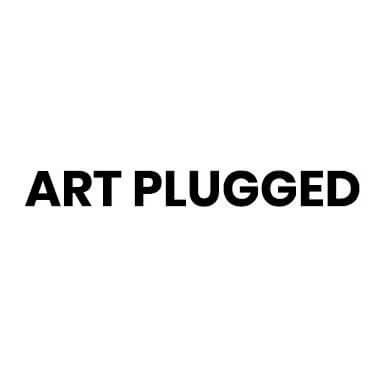Beyond Patchwork: The Abstractions of Yvonne Wells
20th September, 2024 – 2nd November, 2024
Fort Gansevoort
5 Ninth Avenue
New York, NY
Fort Gansevoort will present Beyond Patchwork: The Abstractions of Yvonne Wells, the gallery’s second solo exhibition of the Alabama-based artist. Born in 1939 in Tuscaloosa, Yvonne Wells is a self-taught textile artist living and working in the same region that was home to the enslaved female quilters of the rural community known as Gee’s Bend.
While versed in the heritage techniques associated with them, Wells possesses a deeply maverick attitude that has freed her to break the rules of traditional quilt- making and forge a decidedly individualistic artistic path with her own invented visual vernacular. Wells has attracted acclaim over past decades for works that assert a bold narrative figuration, taking on cultural and sociopolitical topics that range from portraits of Pop icons to the ongoing struggle for rights and equality. Against that backdrop, the exhibition at Fort Gansevoort will be the very first to elucidate a different aspect of Wells’ practice— her unique relationship to abstraction as an intuitive and improvisational method of construction and a liberating form of self-expression.


Sea Monster 1990
Assorted fabrics
49 x 44 inches
©Yvonne Wells. Courtesy of the artist and Fort Gansevoort, New York
Beyond Patchwork coincides with a milestone in the artist’s career. Wells’ work is being written into the canon of exceptional Black American textile arts via the first monograph devoted to her long career, to be published by University of Alabama Press in September 2024 and complemented by the survey exhibition Picture This: The Story Quilts of Yvonne Wells, on view at Paul R. Jones Museum in Tuscaloosa, Alabama from August 2 to September 27, 2024.
Co-authored by Wells and University of Alabama Professor Stacy Morgan, the monograph will span nearly five decades of Wells’ output and include scholarly essays as well as more than 100 color plates of her quilts.
Wells first took up quilting in the winter of 1979. With no prior sewing experience, she pieced together found scraps of fabric with the practical intent to keep her family warm. To this day, Wells uses repurposed fabric and found objects as the primary raw materials in her work, a generative process of reuse and adaptation that fuels her creative production.
Guided by the patterns and textures that appear before her, Wells’ spontaneous aesthetic choices reflect the resourcefulness, adaptability, and radiant imagination that characterize her spirit and define her art. Improvisation and chance are integral to her artistic process. Instead of planning compositions in advance, she embraces an intuitive approach, sewing together fragments of fabric by hand as the materials speak to her. Thus, Wells’ quilts are often irregular in shape—an outcome she welcomes.
There is a deliberateness to Well’s seemingly spur-of-the-moment arrangements which beguile the viewer through their eccentricity and immediacy. Wells’ early quilts often drew inspiration from traditional patterns, such as Log Cabins, Dresden Plates, Strip Quilts, and Eight- Pointed Stars. However, the variations in shapes and sizes of fabric pieces, unconventional color and pattern combinations, and prominent stitches reveal her instinctual compulsion to break from convention and apply her ingenuity to the expression of a new voice.


African-American 1994
Fort Gansevoort’s exhibition will showcase fifteen quilts by Wells, including very early examples alongside such recent quilts such as The Gees Bend Way (2022), which pays homage to her artistic predecessors. Exemplifying Wells’ early foray in quilt making, Lone Star (1987) takes the form of a traditional pieced quilt. Its design is based on a photograph of a quilt that appeared in the local Tuscaloosa newspaper and which Wells’ husband challenged her to copy. Although the precision of Lone Star is atypical of Wells’ signature aesthetic, this object demonstrates her ability to meticulously cut and assemble a uniform pieced quilt—a ridged style she soon thereafter deliberately disavowed in favor of her own approach. The patriotic color pallet Wells chose for Lone Star foreshadows the political direction her narrative “story quilts” would take.
In the same year, Wells created Round Quilt (1987), in which she liberated the traditional square or rectangular patchwork quilt by translating that archetype into an irregular circular composition. Round Quilt exemplifies heritage techniques typical of African American “crazy quilts” but showcases Wells’ vision and prerogatives in its determined departure from the expected. As the artist proudly exalted, “Let’s see: Is it crooked? Is it not level? That would indicate that it’s really mine.”
See also


The quilt African-American (1994) is composed of stripes of different brightly colored African print cloth—fabric pieces gifted to the artist over time—superimposed with a grid of solid-colored red squares, punctuated by narrow black stripes.
Perhaps one of the most symmetrically balanced compositions among Wells’ abstract quilts, African-American is unique in her oeuvre because it has lived many lives as a functional and cultural object: For many years it was used as a tablecloth at Well’s church during Thanksgiving gatherings.


Assorted fabrics
77 x 68.5 inches
©Yvonne Wells. Courtesy of the artist and Fort Gansevoort, New York
During her time as a public-school teacher, Wells also used this quilt as a didactic tool. Though it is absent of figurative imagery, its different compositional textiles tell important stories about African cultural history. Originally reserved for Asante royalty, Kente cloth has become more accessible through increased production and continues to be associated with wealth, high social status, and cultural sophistication.
Dutch wax print, also known as African wax print or Ankara, is an omnipresent material for clothing in West Africa and Central Africa introduced by Dutch merchants during the 19th century, who took inspiration from native Indonesian designs. Wells’ repurposing of these materials into her own work speaks to the inevitable transformation of artistic traditions that have taken root in America as the result of the African Diaspora. African-American celebrates a variety of cultural traditions while the materials from which it is constructed intrinsically trace the history of forced movement and subjugation of African peoples, raising questions for the viewer about the continued struggle for equality and equanimity.
Beyond the aesthetics and subject matter of her quilts, Wells has confidently described her artistic process as a natural extension and expression of her identity: “If you are looking for stitches that are not seen, you’re in the wrong place. If you’re looking for squares that are squarish, you’re in the wrong place. There isn’t anything that I do that is measured by a tape. I use my arms and say, ‘Well, maybe this is what it should be.’ You will see colors that will blow your mind. But you see, I am a person of color—in more ways than one.”
Beyond Patchwork: The Abstractions of Yvonne Wells opens on the 20th of September, 2024 until the 2nd of November, 2024 at Fort Gansevoort
©2024 Fort Gansevoort


Art Plugged is a contemporary platform inspired by a relationship with the broader arts communities. We provide our audience with curated insight into the world of art, from exhibitions to artist interviews and more.


